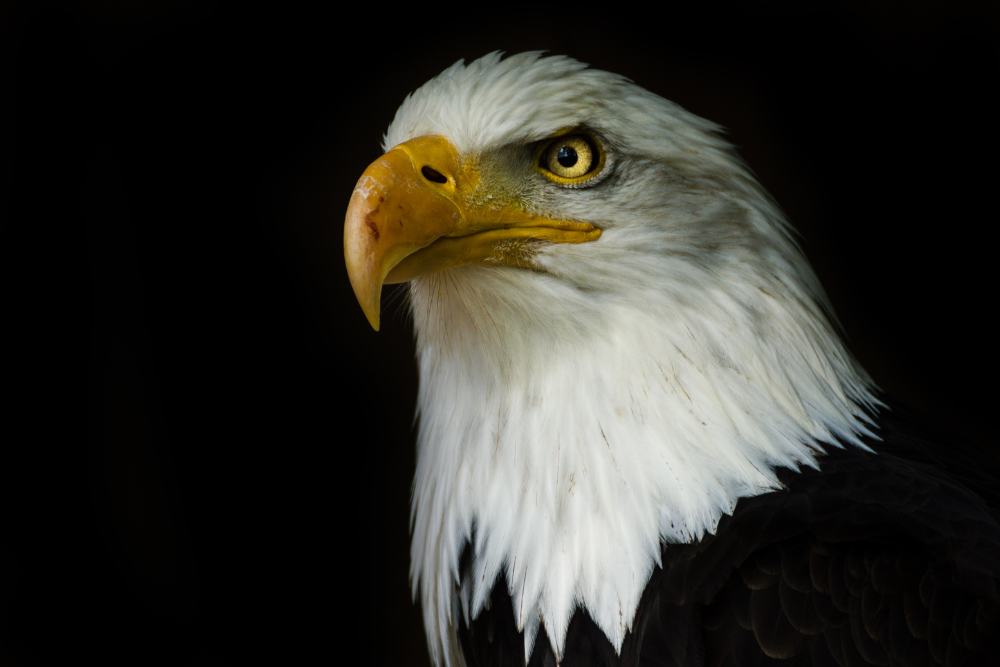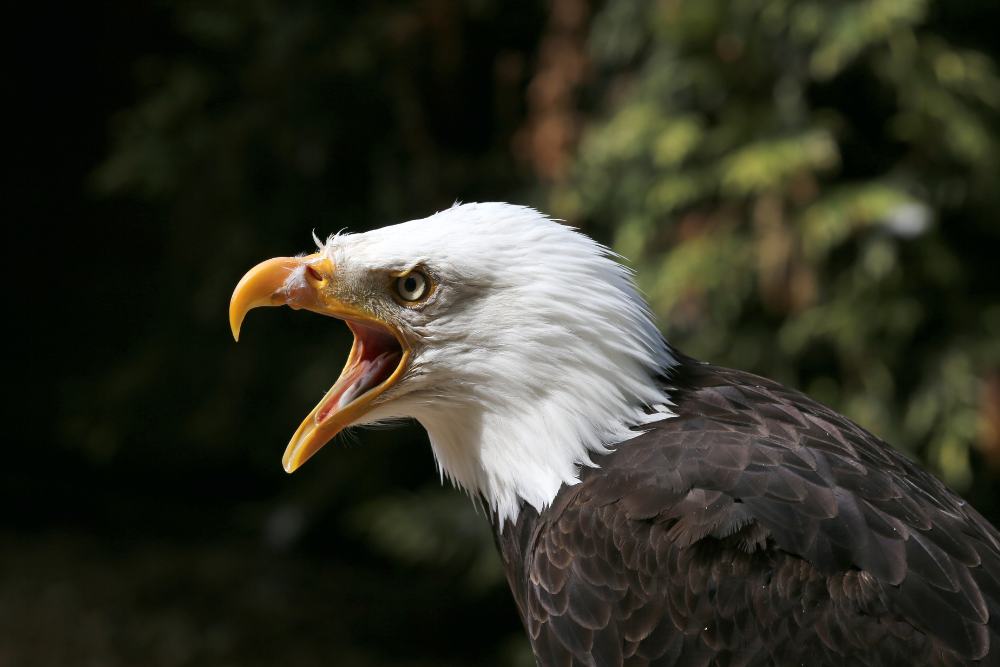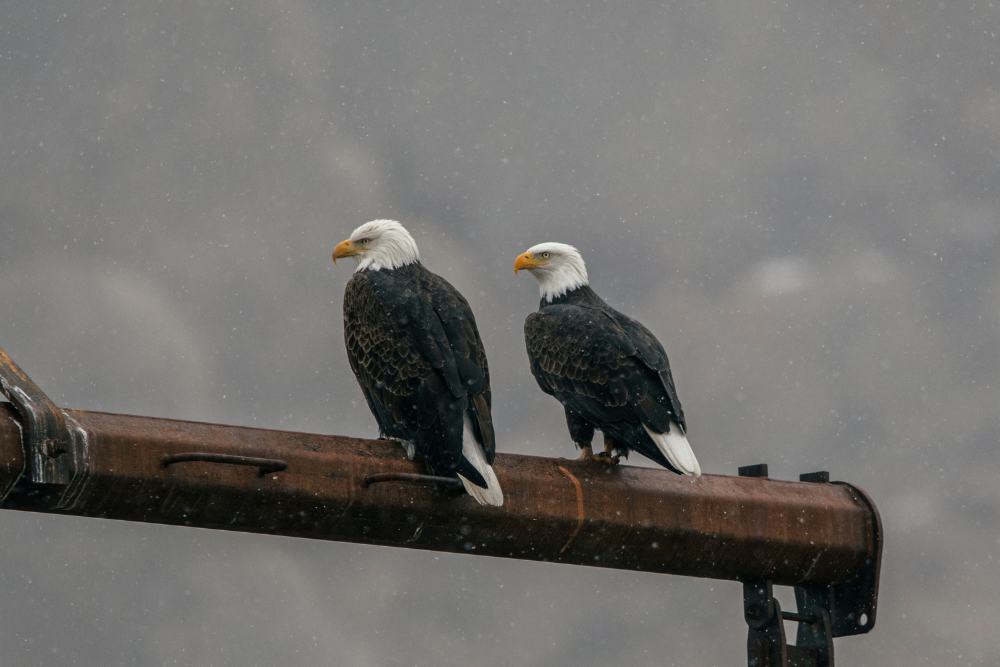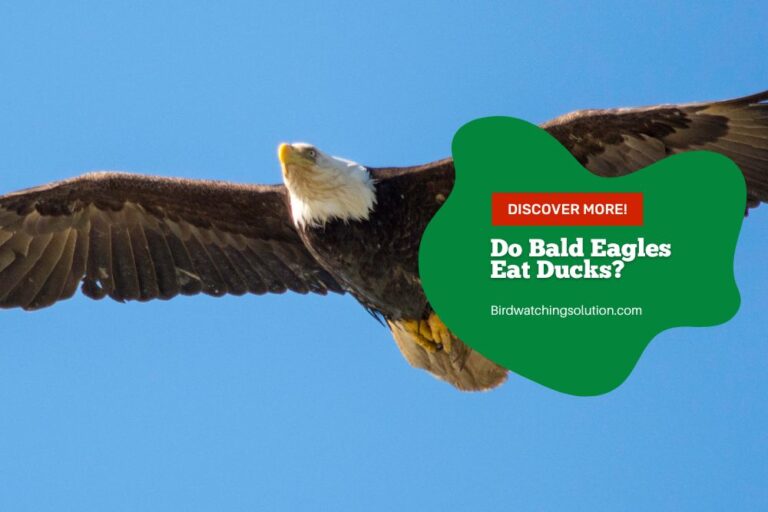Why Do Bald Eagles Have White Heads? The Fascinating Mystery
Bald eagles, the majestic symbols of America, have a captivating feature that sets them apart – their striking white heads.
But have you ever wondered why?
In this article, we unravel why do bald eagles have white heads and explore the fascinating reasons behind this unique characteristic.
Bald eagles have white heads as a result of their remarkable evolutionary adaptation. These iconic white feathers serve a crucial purpose – camouflage and concealment in their natural habitat. By blending with their surroundings, bald eagles can efficiently hunt for prey and protect themselves from threats.
Understanding the evolutionary advantage of their white heads sheds light on the incredible survival strategies of these magnificent birds.
Join us on a captivating journey as we delve into the anatomy, biology, and environmental factors contributing to bald eagles’ white head coloration.
Discover how their diet, age, and communication tactics affect their distinctive appearance.
Uncover the conservation efforts and success stories that safeguard these national symbols.
Prepare to be awestruck by bald eagles’ hidden secrets and awe-inspiring beauty as we unlock the enigma of their white heads.

Why are Bald Eagles’ Heads White?
The white heads of bald eagles are a remarkable feature that captivates and intrigues observers. There are several reasons behind the white coloration, which we will explore in detail:
Feather Structure and Pigmentation
- Bald eagle feathers are made up of a protein called keratin, just like human hair and nails.
- The structure of their head feathers allows for maximum reflectivity, resulting in a brilliant white appearance.
- Melanin, the pigment responsible for hair and feather color, is absent in their head feathers, causing them to appear white.
Camouflage and Concealment
- The primary purpose of bald eagles’ white heads is to camouflage in their natural habitat.
- When perched in trees or soaring above water bodies, the white heads blend with the sky, clouds, and light-colored branches, making it difficult for prey and potential predators to detect them.
- This camouflage helps them approach prey unnoticed and evade potential threats.
Signaling and Visual Communication
- Bald eagles use their white heads as visual signals to communicate with other eagles.
- During courtship displays and territorial disputes, they puff up their head feathers, making their white heads more prominent and visible to other eagles.
- This visual display is essential to their communication repertoire, indicating dominance, readiness to mate, or territorial boundaries.
Age and Maturity
- The coloration of bald eagles’ heads changes as they age.
- Juvenile bald eagles have mostly dark heads, gradually turning mottled and streaked with white as they mature.
- It takes approximately four to five years for a bald eagle to develop the full white head characteristic of adult eagles.

Environmental Factors
- Environmental factors such as geographic location and habitat influence the coloration of bald eagles’ heads.
- In areas with colder climates and snow-covered landscapes, bald eagles may have whiter heads to enhance their camouflage.
- Regional variations in head coloration exist, with some eagles exhibiting more mottled or speckled heads than others.
So the white heads of bald eagles serve multiple purposes, including camouflage, communication, and age-related changes.
The absence of melanin and the unique feather structure contribute to their stunning white appearance.
Understanding the reasons behind this distinctive feature allows us to appreciate the fascinating adaptations of these majestic birds in their natural habitats.
Furthermore, the following table represents the relationship between the bald eagles’ head coloration and their age.
| Age | Head Coloration |
|---|---|
| Juvenile | Mostly dark |
| Subadult | Mottled and streaked |
| Adult | Fully white |
Anatomy and Physical Characteristics of Bald Eagles
Bald eagles possess various physical features contributing to their remarkable appearance and survival abilities.
Let’s delve into these majestic birds’ anatomy and physical characteristics, focusing on their distinctive white heads.
- Size, weight, and Wingspan:
- Bald eagles are 28 to 40 inches long, making them one of North America’s largest birds of prey [1].
- On average, they weigh around 12 pounds.
- They have an impressive wingspan measuring up to 5.5 to 8 feet.
- Body Structure:
- Their bodies are streamlined and built for efficient flight.
- Bald eagles have long, broad wings and a large, powerful beak for capturing and tearing prey.
- Plumage:
- The plumage of bald eagles is predominantly dark brown.
- They have contrasting white feathers on their head, neck, and tail.
- Juvenile bald eagles have a mottled brown and white appearance, gradually transitioning to the iconic white head as they mature.
- Feathers:
- The white feathers on the heads of bald eagles are not a separate type of feather but a result of their unique pigmentation and structure.
- These feathers lack melanin, the pigment responsible for dark colors in feathers.
- The absence of melanin allows the white feathers to reflect light, creating a striking white appearance.
- Feather Adaptations:
- The structure of bald eagles’ head feathers plays a crucial role in their white coloration.
- These feathers are denser, finer, and have more barbules (small hooks on the feather strands) than their body feathers.
- This specific structure enhances their reflectivity, making the white color more pronounced.
| Feature | Description |
|---|---|
| Size | 28 – 40 inches |
| Wingspan | 5.5 – 8 feet |
| Body Structure | Streamlined body, broad wings, and a powerful beak |
| Plumage | Dark brown with white feathers on the head, neck, and tail |
| Head Feathers | Lack melanin, dense, fine, and have more barbules |
| White Head Function | Camouflage and visual communication tool |
When Do Bald Eagles Get Their White Heads?
The transformation of bald eagles from youthful fledglings to majestic adults with pure white heads is a captivating journey.
Let’s explore this transition uniquely, uncovering the fascinating details of when and how bald eagles acquire their iconic white heads.
Eaglet Stage:
During the first 12 weeks of their lives, nestling eaglets sport a light grey-white hue on their heads and necks.
As they grow, their plumage darkens, with the emergence of black-contoured feathers on their backs, breasts, and wings.
These eaglets reach full size and strength by around nine weeks, ready to leave the nest behind.
Juvenile Stage:
Between 12 weeks and 1.5 years of age, juvenile bald eagles exhibit fully grown dark brown plumage adorned with scattered white flecks.
Their plumage undergoes minimal color change except for approximately two molting cycles.

Notable Transition:
After about 6 months of leaving the nest, a subtle change occurs as the bald eagle’s coloration turns light brown.
By 1.5 years, distinct white flecking becomes more apparent, particularly underneath the wings, becoming clearly visible during flight.
The bill takes on a dark grey color, while some juveniles may begin to show signs of bill coloration at 1.5 years old.
Varied Plumage:
Between 1.5 and 2.5 years of age, the plumage of young bald eagles becomes highly variable, making age prediction challenging.
Some individuals may display predominantly dark plumage with scattered white flecks, while others exhibit mostly white plumage with brown speckles.
Transitional Phase:
Around 2-3 years of age, bald eagles enter a distinct stage where their heads and tails transition towards white.
Brown flecking adorns these areas, marking the transformation from youth to adulthood.
Their bills turn yellowish-brown, and a notable feature is a contrast between their dark brown breasts and paler throats and bellies.
Nearing Adulthood:
Between 2.5 and 3.5 years, bald eagles continue to develop their white heads and tails.
Brown flecking is still present, but the transformation becomes increasingly pronounced.
They sport predominantly yellow bills, and their bodies darken, intensifying brown plumage.
They resemble adults in flight, although adults possess full white heads and tails.
Reaching Adulthood:
From 4.5 years onwards, bald eagles complete their journey into adulthood.
They acquire the distinguished plumage of mature eagles, featuring a pristine white head and tail.
Adults exhibit vibrant yellow bills, yellowish-white eyes, and striking yellow legs. Once they have reached this stage, their appearance remains unchanged.
Here’s a table that may be helpful for you as it summarizes the whole information
| Age Range | Appearance |
|---|---|
| 1-12 weeks | Light grey-white on head and neck. Plumage darkens with black-contoured feathers. |
| 12 weeks – 1.5 years | Fully grown dark brown plumage with scattered white flecks. |
| 1.5 – 2.5 years | Variable plumage, some darker with white flecking, others mostly white with brown flecking. |
| 2.5 – 3.5 years | Head and tail start turning white with brown flecking. Yellow bills, darkening belly. |
| 4.5 – Adult | Complete transition to adult plumage. Pure white head and tail. Bright yellow bills and legs. |
Do Female Bald Eagles Have White Heads?
In the enchanting world of bald eagles, a question arises:
Do female bald eagles have the same majestic white heads as their male counterparts?
Both male and female adult bald eagles bear striking resemblances. They don the characteristic white heads and tails, sport dark brown bodies, and flaunt vibrant yellow bills and legs, making them nearly indistinguishable from afar.
But here comes another question, how to differentiate between a male and a female bald eagle?
Hmm…! That’s a good one!
Size Matters… Somewhat
Size alone cannot be considered a foolproof differentiating factor for male and female bald eagles.
Surprisingly, the largest northern male eagles can rival or surpass the size of their smaller southern female counterparts.
Nevertheless, when encountered as a pair, one may observe that female bald eagles showcase a commanding presence, standing approximately one-third larger than their male counterparts.
The females exhibit a lengthier wingspan and weigh around 30% more, leaving an indelible impression that sets them apart.

Difference Between Voices
Listen closely to the melodious calls echoing through the sky. Male bald eagles sing their majestic tunes in a higher pitch than their female counterparts.
Though the distinction may be subtle to the human ear, specialized tools enable a deeper understanding of these acoustic nuances.
However, in everyday observations, unraveling the secrets through vocalizations proves to be an art mastered by only a few.
Even though some noticeable features might help distinguish the male bald eagle from the female, there remains ambiguity.
If you are interested in finding the difference between them with more accuracy, then you should go for a DNA test to make everything clear as crystal.
However, that’s like cutting a cake with a double edge sword, lol!
Last Minute Insights!
As we conclude this captivating exploration, let’s reflect on the remarkable discoveries.
From the light grey-white down of nestlings to the emergence of dark plumage with scattered white flecks in juveniles, the journey unfolds gracefully.
Around 5.5 years, bald eagles achieve their majestic presence with iconic white heads and tails.
Distinguishing between male and female bald eagles hints at size differences and subtly higher-pitched calls of males.
Yet, surgical examination or DNA testing provides definitive identification.
Their white heads symbolize power and resilience, commanding admiration in their habitats and soaring through the sky.
In this grand tapestry, the bald eagle is an emblem of freedom.
Let us appreciate the wonders of nature, preserve their habitats, and marvel at the artistry that weaves together beauty, resilience, and timeless wonder.
The journey of the bald eagle’s white head is a testament to nature’s grace and the captivating mysteries of the animal kingdom.
Thank you so much for reading
Happy birding!





